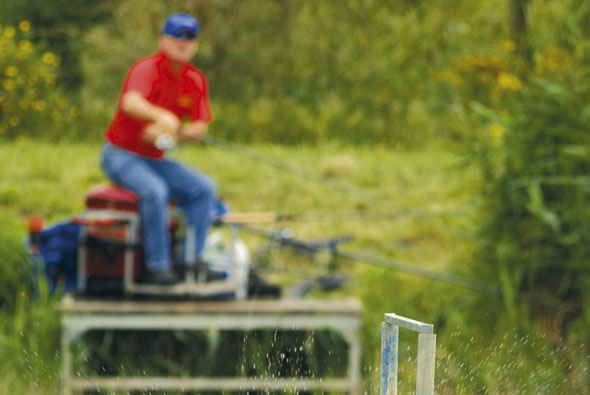How to cast
The ability to cast close to a fish-holding feature, or consistently drop a feeder on a sixpence, often means the difference between bagging or blanking.
Here’s what to do, and what not to do, if you want to become a better caster...
1
DO... face the target with shoulders square and line the rod up above your head with the blank running above the centre of your head with the butt-end pointing directly at the intended target. Keep your elbows tight to your body.
DO NOT... try to cast across one shoulder with the butt end pointing away from the target. Do not open your elbows out
2
DO... make sure that the float or feeder you’re casting hangs about 76cm (30-inches) below the rod tip and is as still as possible, not swinging like a pendulum.
DO NOT... have the float or feeder wound close to the rod tip, or hanging too far down towards the ground.
3
DO... pick a fixed far-bank marker like a tree, bush or telegraph pole and always cast directly at it and allow for any strong crosswind.
DO NOT... aim for a spot in open water that you cannot positively identify at any time of the day as the sun and clouds travel across the sky.
4
DO... make sure the spool on your reel is correctly filled to almost level with the lip, and you can also comfortably hold the line with your index finger during casting without stretching.
DO NOT... underfill the reel as line will not flow freely, so reducing the length of the cast. Do not overfill the reel as coils of line will fall off the spool, causing tangles.
5
DO... use the reel’s line clip to help you cast an identical distance every time. If casting to a feature like an aerator, make an initial cast but deliberately drop the float or feeder a few metres short of the target. Then, pull another metre of line off the spool and ‘clip up’ before recasting. Repeat the process until the float or feeder lands on target but cannot be overcast because the clip will not allow any more line off the spool.
DO NOT... try to land the float or feeder tight up against a feature with the first cast. If you overshoot, you’ll tangle and probably have to pull for a break.
6
DO... make sure that the guides on your rod are properly aligned.
DO NOT... try to cast when the rod rings are twisted.




